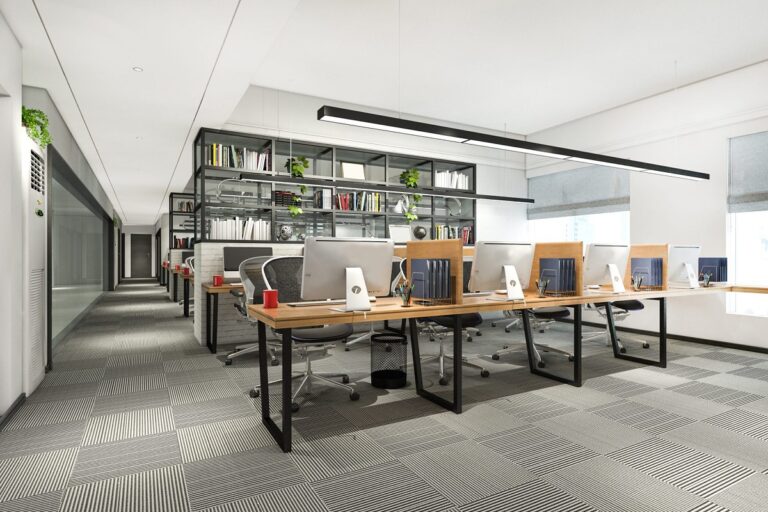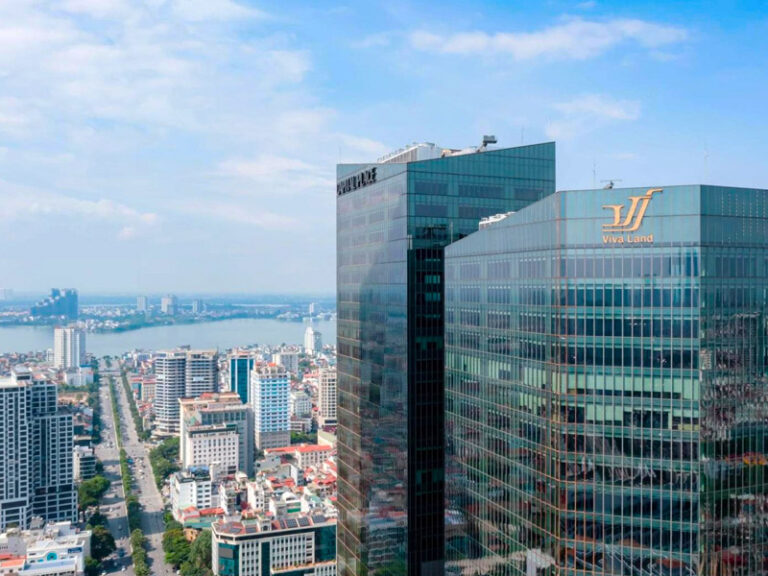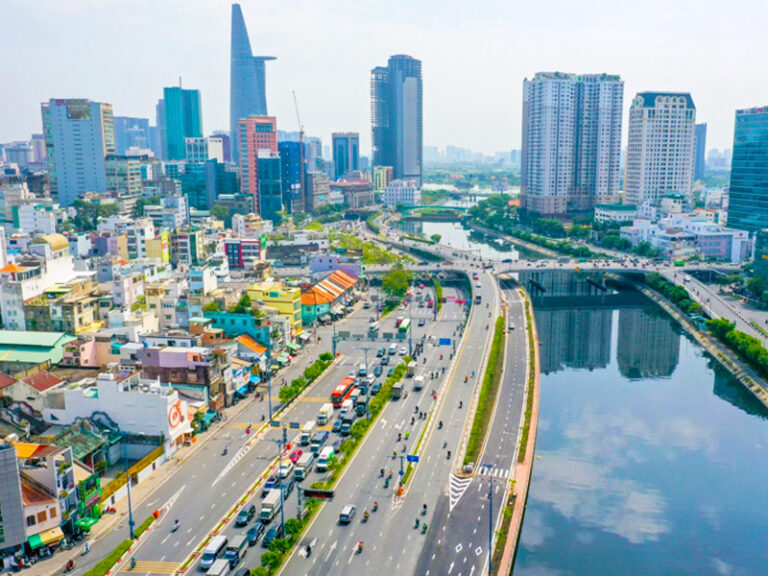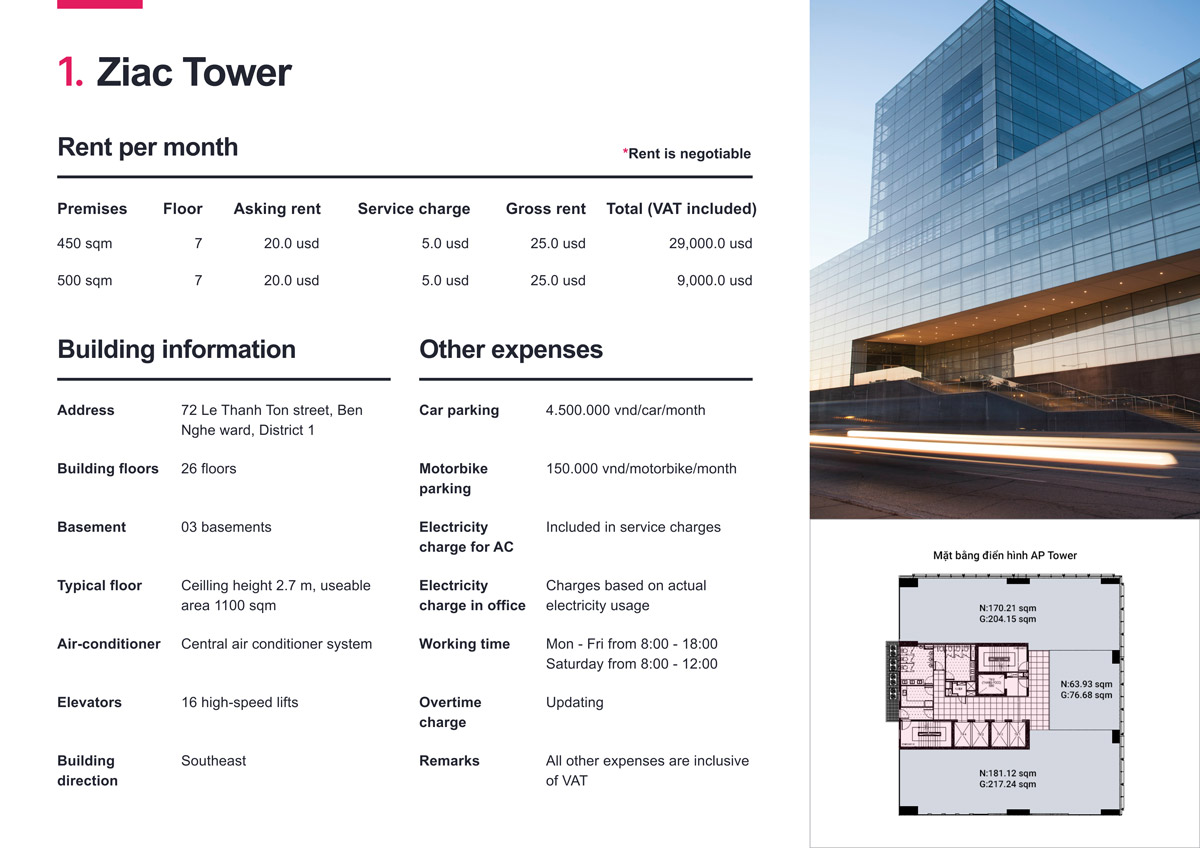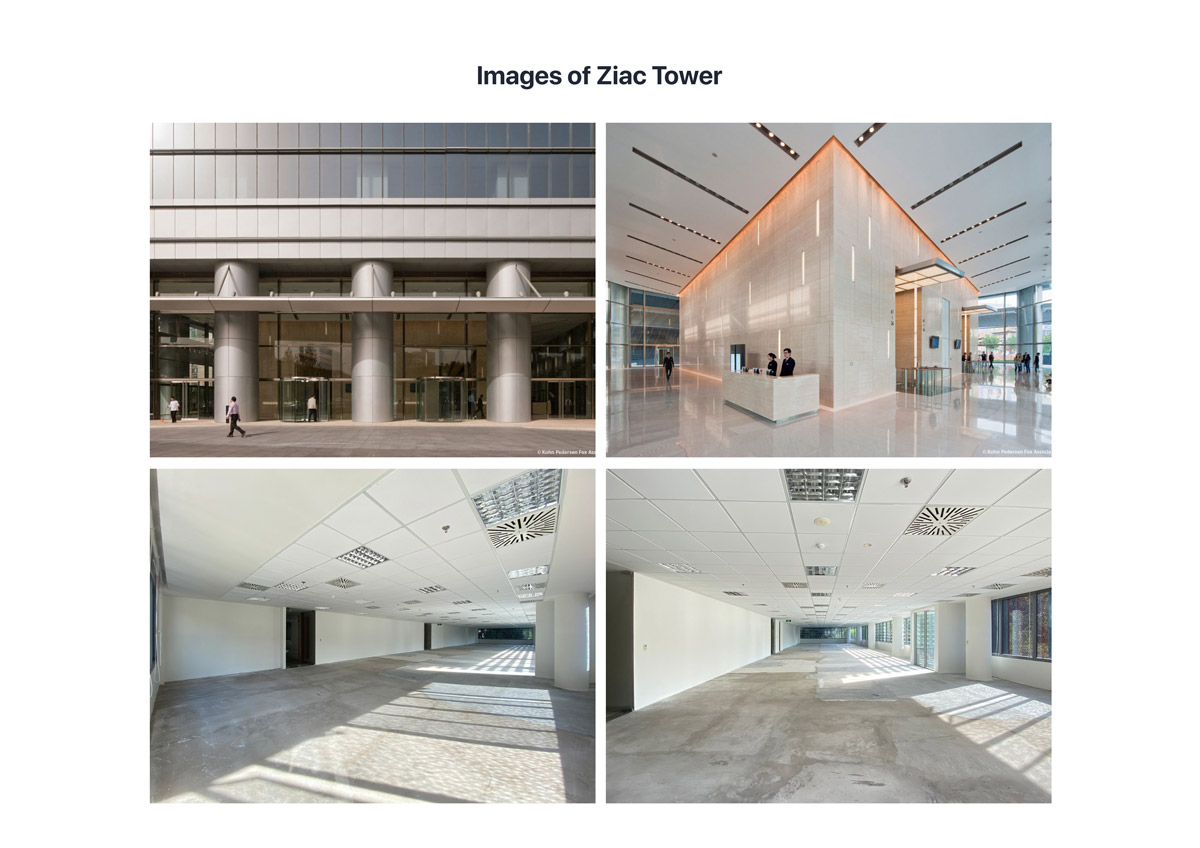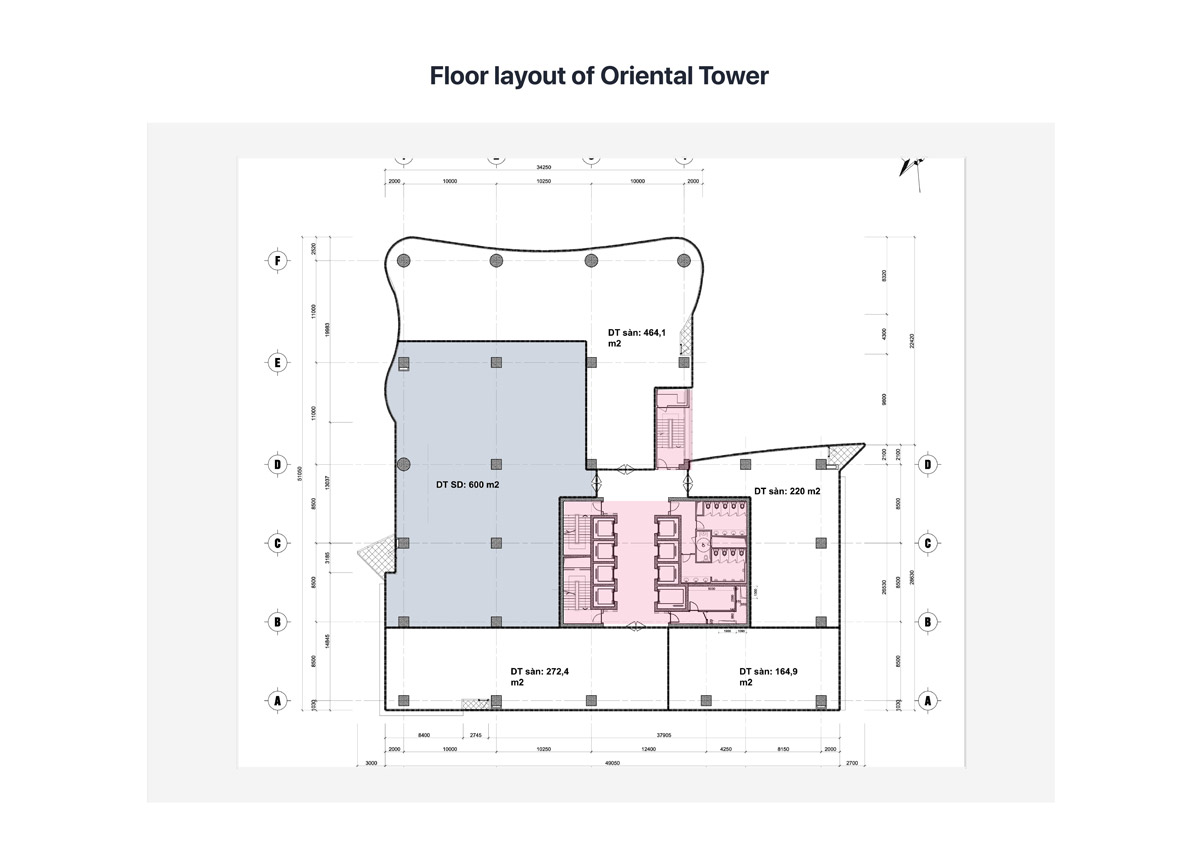Top 10 Best Cities to Live in Vietnam for Expats and Locals

Vietnam, a country with diverse natural landscapes and unique culture, has always been an attractive destination for both domestic and international travelers. Alongside this, the quality of life in Vietnam’s major cities is continually improving, offering numerous opportunities and wonderful experiences. So, which cities are currently considered the most livable in Vietnam? Let’s explore the top 10 livable cities in Vietnam in the article below with Maison Office.
Top 10 most livable cities in Vietnam
| No. | The most livable city | Area (km²) |
| 1 | Da Nang | 1289,23 |
| 2 | Da Lat | 393,68 |
| 3 | Nha Trang | 251,07 |
| 4 | Hai Phong | 150,61 |
| 5 | Vung Tau | 152,06 |
| 6 | Hue | 102,10 |
| 7 | Ho Chi Minh | 2095,22 |
| 8 | Ha Noi | 335,74 |
| 9 | Can Tho | 146,04 |
| 10 | Hoi An | 20,30 |
Table of Contents
1. Danang – The Most Livable City in Vietnam
To answer the question, “Which city is the most livable in Vietnam?”, many people immediately think of Da Nang. So, what makes this beautiful coastal city in Central Vietnam so irresistible?
First, anyone who sets foot in Da Nang cannot help but be impressed by the warm and friendly welcome from the local people. This is a unique aspect of Da Nang that captures the hearts of visitors with its hospitality and the joy of sharing local culture and lifestyle.
Da Nang is blessed by nature with stunning landscapes a unique combination of mountains and pristine blue sea. Among its attractions, My Khe Beach draws millions of tourists each year. Recognized as one of the most beautiful beaches in Asia (according to TripAdvisor), it is not only beautifully clear but also boasts a rich diversity of marine flora and fauna.
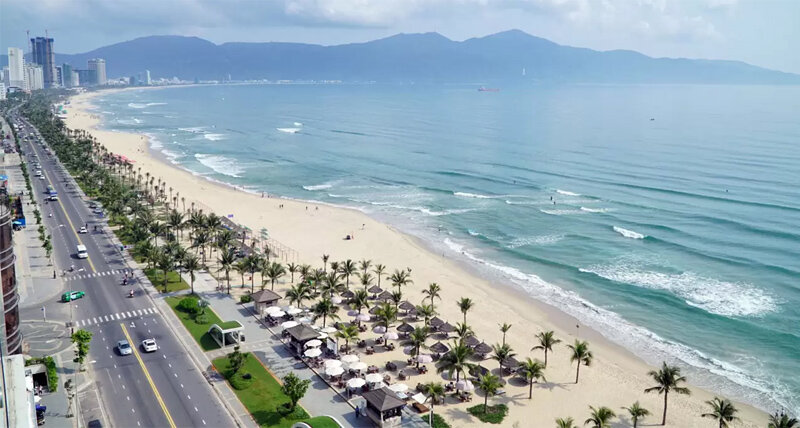
The city is also a famous tourist destination with a series of iconic landmarks, such as Ba Na Hills, Dragon Bridge, the Lady Buddha statue at Linh Ung Pagoda, Sun Wheel and Han River Swing Bridge.
In addition, Da Nang is recognized as one of the key economic cities in the country, with tourism being the top priority. Despite its remarkable growth rate, Da Nang continues to maintain sustainable urban development. Accordingly, the city has implemented various measures to preserve green forests, helping to regulate the natural and fresh air. Furthermore, smart urban planning is being considered and implemented to ensure a healthy living environment that is friendly to both residents and tourists.
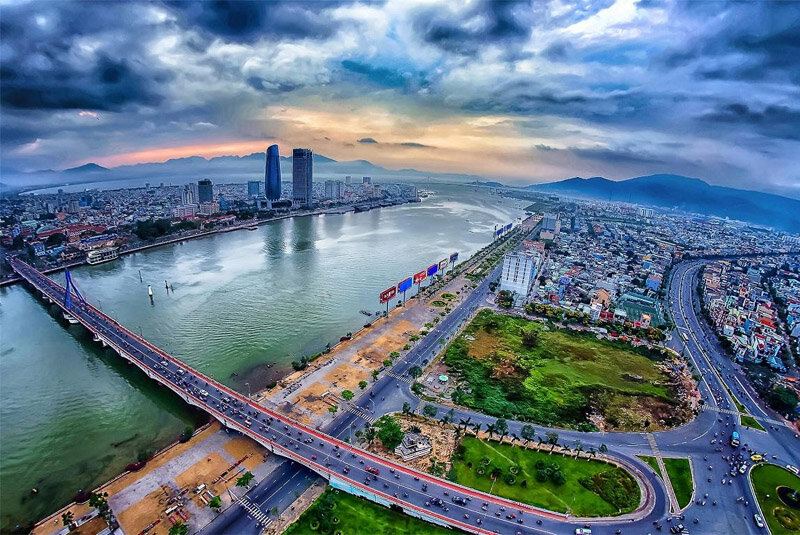
Compared to Hanoi or Ho Chi Minh City, Danang surprises with its very affordable cost of living. Therefore, Danang not only attracts tourists but also many labor classes come here to live and work.
2. The city of Dalat
Da Lat is truly one of the most livable cities in Vietnam and an attractive tourist destination for both domestic and international visitors. Unlike larger urban areas, life here is not noisy or bustling. This contributes to the refined, gentle and hospitable nature of the people of Da Lat.
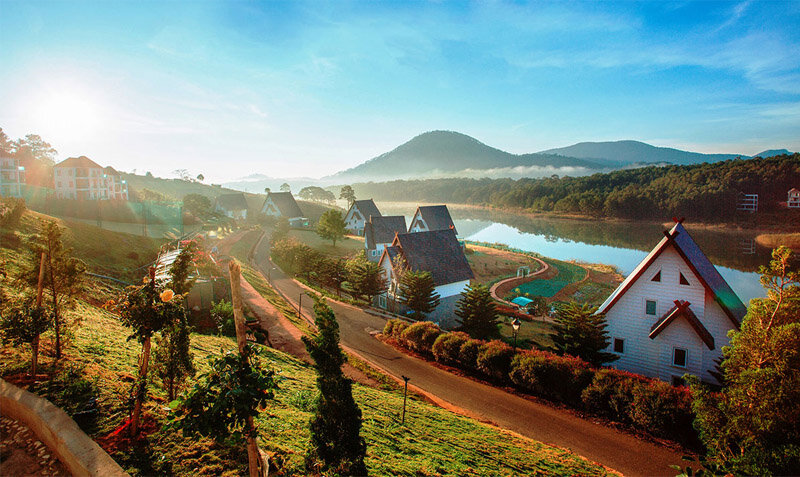
Da Lat City is situated on the Lam Vien Plateau at an altitude of approximately 1,500 meters above sea level. Because of this, the area enjoys a cool climate year-round, along with fresh and pleasant air. This is a distinctive feature of Da Lat, providing an ideal relaxation space for all visitors.
The beauty of Da Lat is characterized by its lush pine forests and the vibrant colors of its four seasons of flowers. No matter which season you visit, you will be able to admire a beautiful Da Lat adorned with brilliant blossoms. For this reason, Da Lat is affectionately known as the “City of a Thousand Flowers.” In addition to its stunning natural landscapes, Da Lat also impresses with many unique attractions, such as Elephant Waterfall, Love Valley, Chicken Church, Langbiang Peak, Tuyen Lam Lake and Xuan Huong Lake.

With its advantages in living environment and affordable living expenses, Dalat is also a place chosen by many people to live and work.
3. Nha Trang City
Nha Trang consistently ranks among the most livable cities in Vietnam, attracting not only tourists but also many residents who choose to live here. Located in the heart of Khanh Hoa Province, Nha Trang is often referred to as the “Pearl of the Orient.” The city boasts numerous stunning, crystal-clear beaches and is highlighted by famous landmarks such as the Hon Chong rock formation, Hon Mun Island, Po Nagar Cham Towers, Nha Trang Stone Church and Long Son Pagoda.
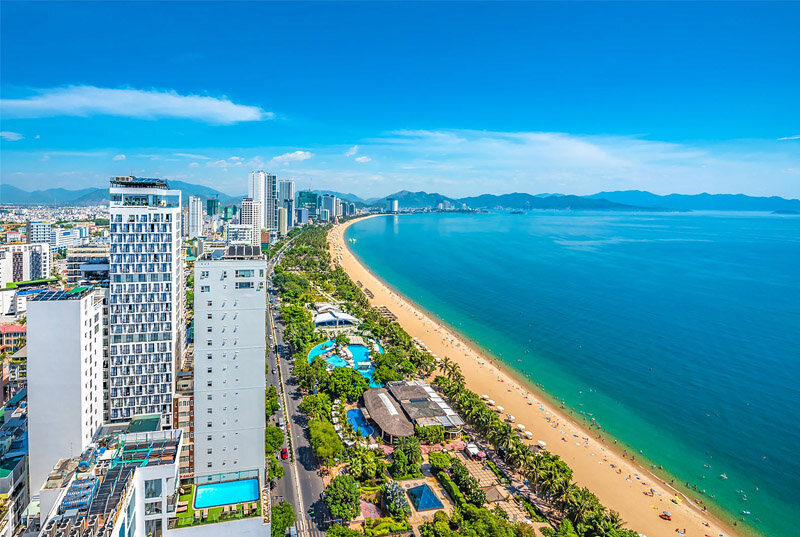
The climate here is quite mild and pleasant, with an average annual temperature of 26.3°C. During the winter months, the weather is not too cold, allowing for uninterrupted recreational activities.
The infrastructure and transportation system in Nha Trang are continually being improved, aiming to create a green, clean and beautiful urban landscape. This not only helps Nha Trang develop sustainable tourism but also earns it favorable recognition from visitors and international friends. The standard of living in the city is stable due to the relatively steady prices of goods. Job opportunities are also promising, contributing to an improved quality of life for the local residents.
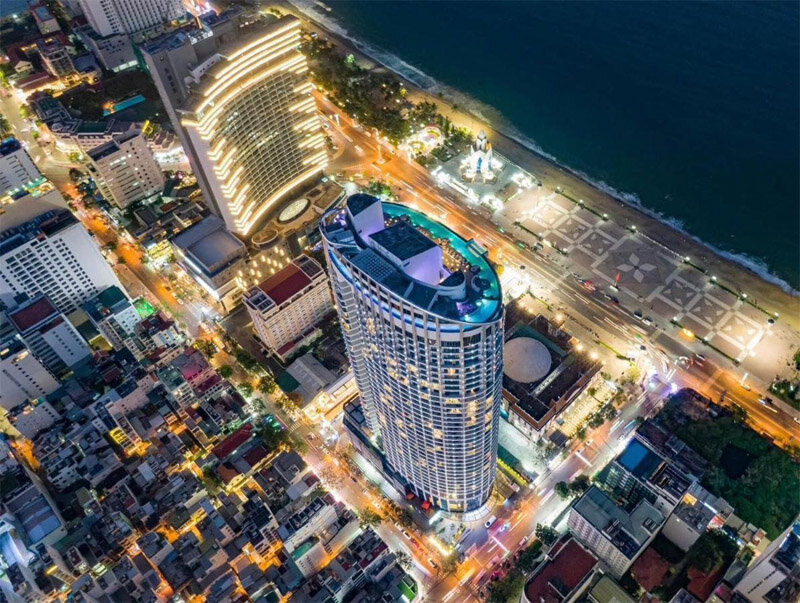
Most residents of Nha Trang are satisfied with the slow and peaceful pace of life. This allows them to balance work and personal life, spending more time for themselves and their families. For this reason, anyone who visits the coastal city of Nha Trang often wants to stay longer to enjoy moments of tranquility and relaxation.
4. Hai Phong City
When talking about the most livable cities in Vietnam, one cannot overlook the port city of Hai Phong. This city is known as a symbol of prosperous and modern development. Over the years, Hai Phong has consistently ranked at the top in terms of economic growth rates nationwide, attracting strong foreign investment.
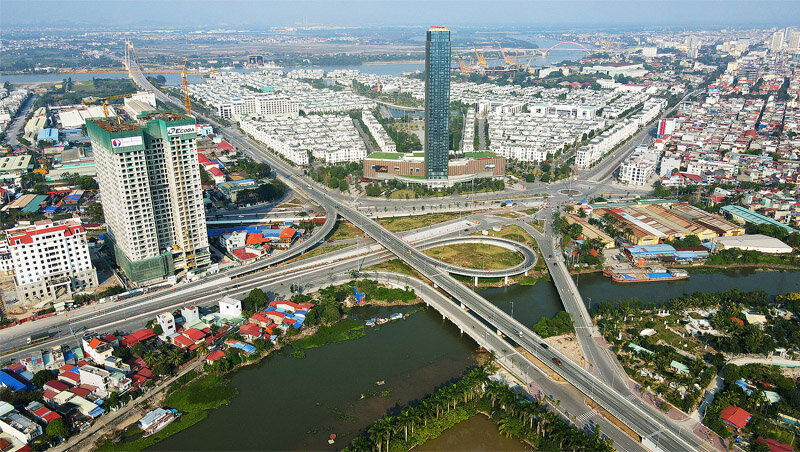
To maintain its growth momentum, Hai Phong has invested in many large transportation and urban projects. This opens up development opportunities for various socio-economic sectors in the city, particularly the key maritime economy. The significant transformation has positively changed the lives of the local residents day by day.
The red-flowered city of Hai Phong is also an ideal destination for both domestic and international travelers. It is best known for its beautiful beaches, bays and islands, as well as its unique local culinary culture. Some must-visit attractions when coming to Hai Phong include Do Son Beach, Cat Ba Island, Lan Ha Bay, Hai Phong Museum and Trang Kenh Historical Site.
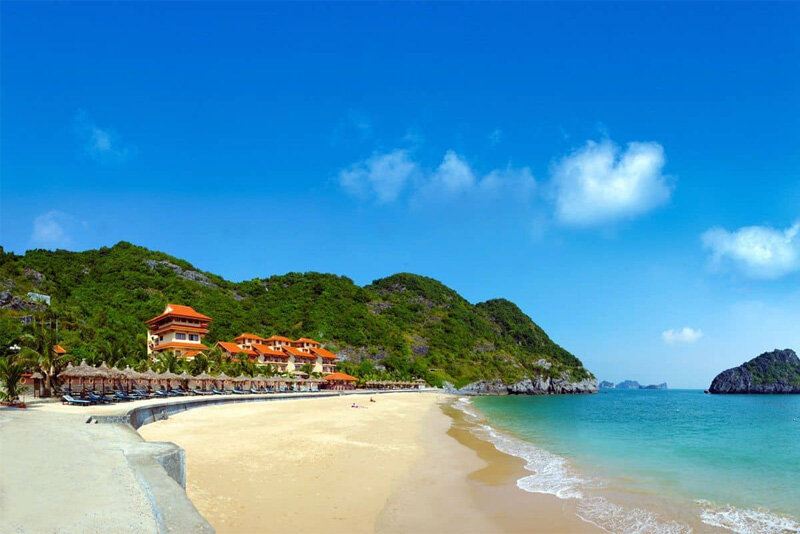
The gentle pace of life, unhurried and serene atmosphere, along with the fresh and pleasant air, is the distinctive charm that attracts many to choose to stop here.
5. Vung Tau City
Vung Tau is known as a coastal city with many beautiful beaches, clear blue waters and a diverse marine ecosystem. Additionally, the city boasts a system of pristine forests and lakes, providing a naturally fresh atmosphere. The warm climate year-round is another characteristic of this city, creating ideal conditions for tourism development.
When visiting Vung Tau, travelers can admire the distinctive cultural values and numerous historical sites that reflect the cultural heritage of the coastal people. Notable attractions include the Christ the King statue, the Mother Mary Shrine at Bai Dau, the Vung Tau Lighthouse, Linh Son Co Tu Pagoda and Cape Nghinh Phong.
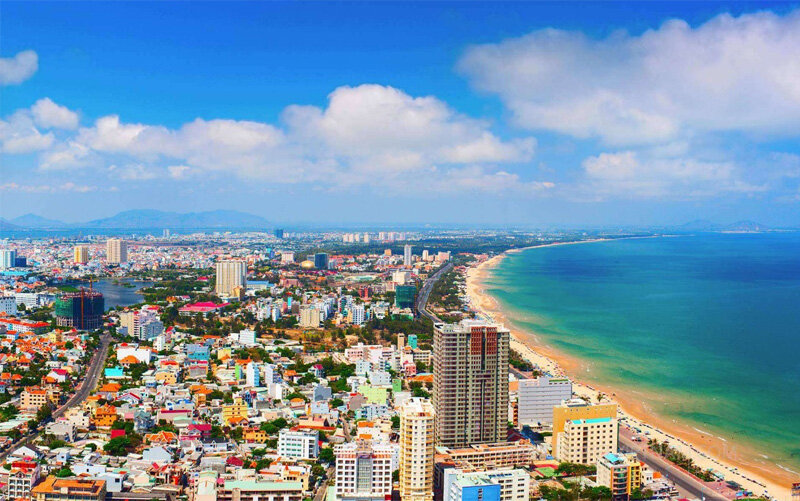
Vung Tau is also known as an economic center within the largest economic triangle in the Southeast region. The city is well planned, featuring many beautiful, wide roads and abundant greenery. In addition to high – end resorts catering to tourism, the city is also investing in the development of various urban areas with high living standards. This has contributed to Vung Tau being listed among the most livable places in Vietnam today.
6. Hue City
Hue is one of the five national cities and a leading cultural and tourism center in the country. This city has also been recognized as a national green city or sustainable urban area (according to WWF). The dreamy beauty of Hue has always served as an inspiration for poetry throughout the ages, featuring the poetic Huong River, the pristine Ngu Binh Mountain and the clear, refreshing Lang Co Beach.
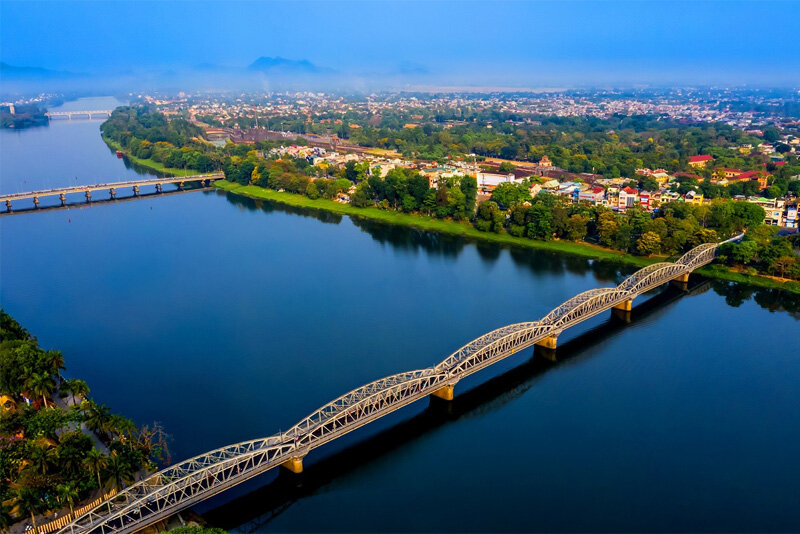
Not only renowned for its stunning natural scenery, but Hue City also stands out with its rich cultural values deeply rooted in the national identity, preserved until today. This is clearly demonstrated through iconic landmarks such as the Imperial City of Hue, Thien Mu Pagoda, Khai Dinh Tomb, Truong Tien Bridge and Quoc Hoc Hue High School.
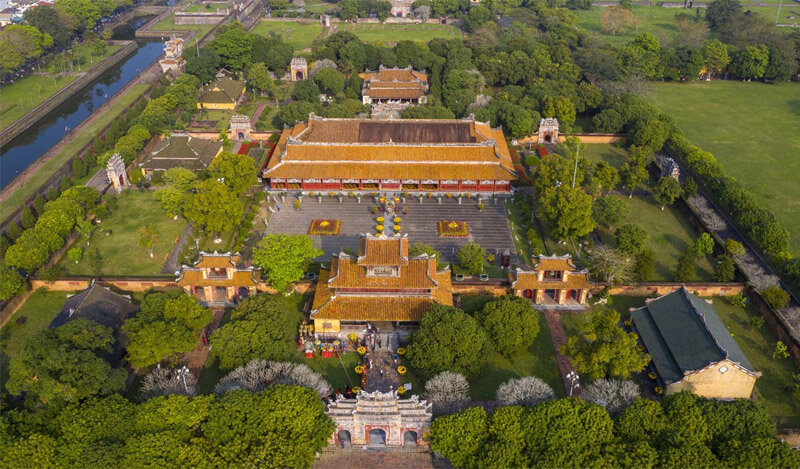
The charm of Hue also lies in its relaxed pace of life, unlike the hustle and bustle of other cities. The image of people in the ancient capital moving gently, slowly and leisurely makes Hue simple, affectionate and somewhat unusual. This is considered one of the most livable cities in Vietnam, especially for those who love a peaceful and gentle way of life.
7. Ho Chi Minh City
When mentioning Ho Chi Minh City (HCMC), many people immediately think of its “specialties” such as traffic congestion, pollution and noise. However, it is still regarded as a livable city for many residents from all corners of the country.
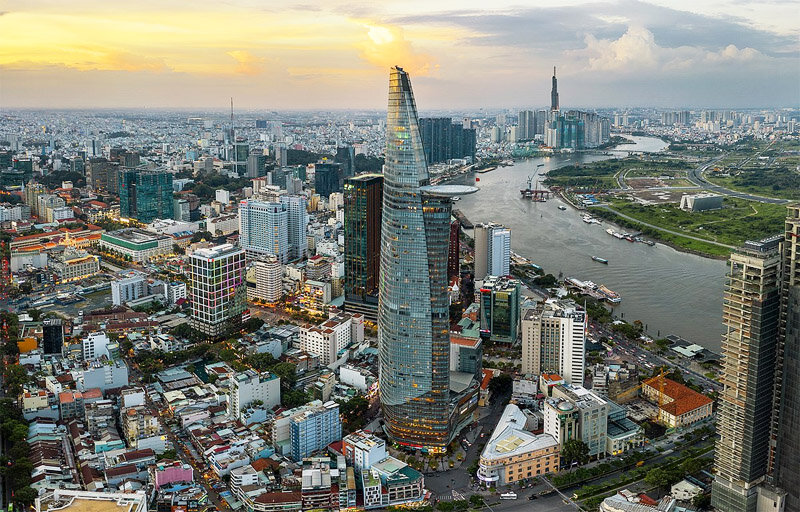
Ho Chi Minh City (HCMC) is the largest city in Vietnam in terms of both population and urbanization. It is also regarded as the leading economic, political, cultural and educational center in the country. Notably, with its robust economic development, HCMC is seen as a potential market, attracting a large number of investors both domestically and internationally, thus providing numerous job opportunities across various fields.
Not only is HCMC a major economic hub, but it is also a destination filled with diverse experiences and an exciting lifestyle. It has been chosen as the place to “settle down and build a career” by many people from all over the country. The blending of regional cultures has created a unique identity that only the city named after Uncle Ho possesses.
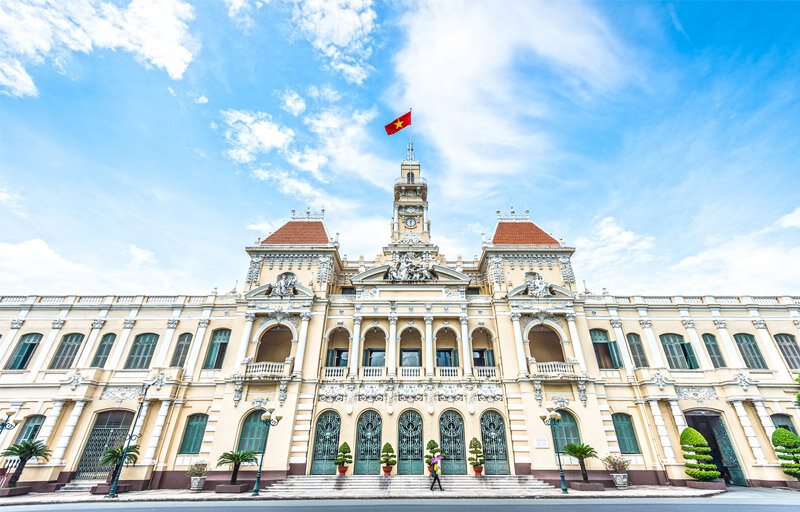
The city has also left a mark on the minds of tourists and international friends with many iconic landmarks such as Notre – Dame Cathedral, Ben Thanh Market, Independence Palace, Landmark 81 Building and the Municipal Theater.
8. Hanoi
Hanoi is the capital of Vietnam and serves as the key political, administrative and cultural center of the country. Aiming for international integration, Hanoi is gradually transforming its landscape with a modern infrastructure system and a strong urbanization process. This is intended to enhance the quality of life for residents while providing a foundation for the development of the city’s socio – economic sectors.
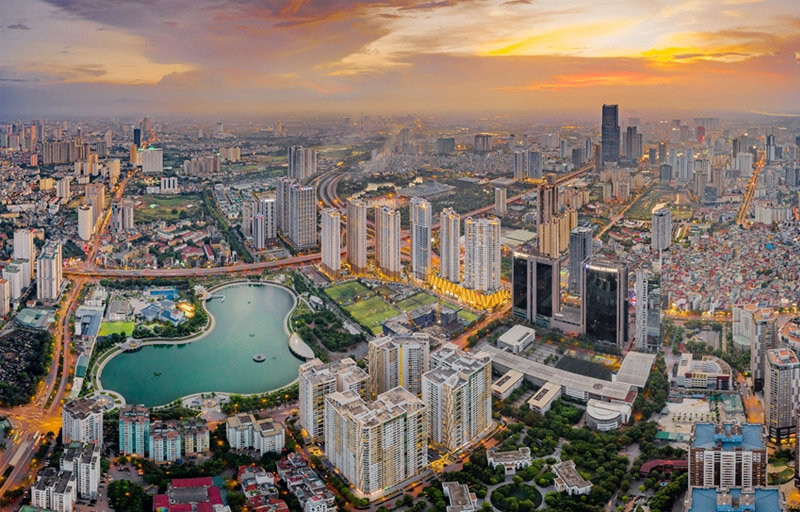
Despite its remarkable urbanization over the past decade, Hanoi has still managed to preserve the ancient charm of this land. Accompanying its history are cultural relics that have stood the test of time in the capital, such as the Imperial Citadel of Thang Long, the Temple of Literature, Hoan Kiem Lake, One Pillar Pagoda and the Ho Chi Minh Mausoleum.
In this new era, the people of the capital continue to maintain thousands of unique festivals, traditional craft villages and distinctive forms of folk art. This not only strongly promotes the image of the country to international friends but also passes down the cultural heritage to future generations.
9. Can Tho City
Can Tho, often referred to as the “Western Capital,” has never been the official capital of the Southwest region in history. This nickname is metaphorical, reflecting Can Tho’s significance in the development of the Mekong Delta region. It is a bustling city, experiencing the fastest growth in the Mekong Delta, serving as the economic, cultural, social, educational and commercial center of the area.
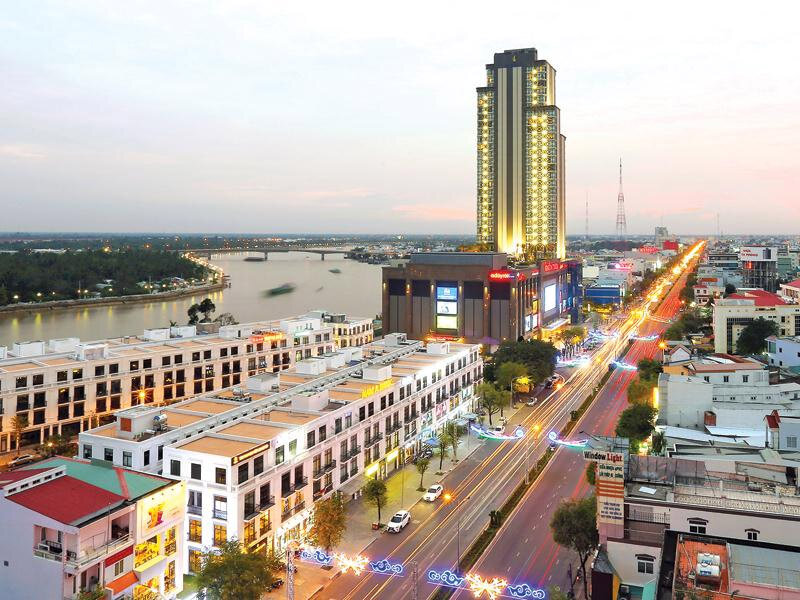
This place is also a riverine urban area, characterized by a dense network of rivers and vast rice fields. The Cai Rang Floating Market – a cultural feature typical of the Southern region – is a unique destination that anyone should visit at least once when coming to Can Tho.
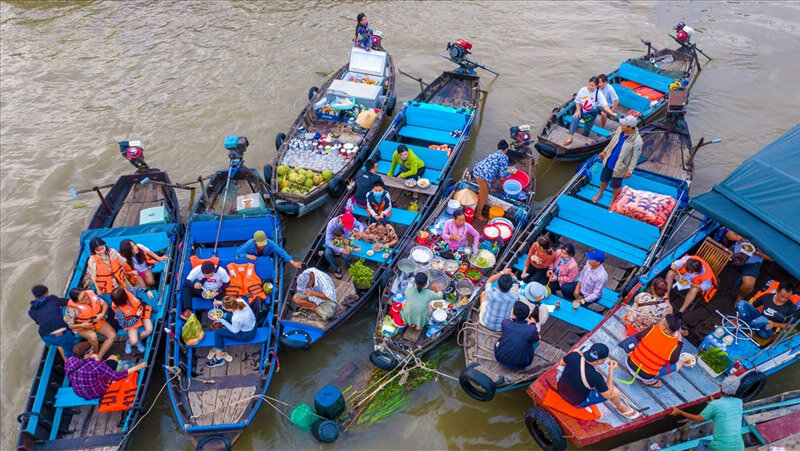
By promoting development in all aspects, this city is gradually transforming and significantly improving the quality of life for its residents. The stable quality of life, clean living environment and diverse amenities have made Can Tho one of the most livable cities in Vietnam. This has attracted many people to Can Tho in search of job opportunities and a place to settle down.
10. Hoi An Ancient Town
Hoi An, an ancient town located at the lower reaches of the Thu Bon River in Quang Nam Province, was once known as a vibrant international trading center in the 17th and 18th centuries. Benefiting from its advantageous geographical location and favorable climate, Hoi An attracted numerous merchant ships from China, Japan and the West. However, in the 19th century, with the decline of maritime routes, Hoi An gradually lost its prominence and gave way to Da Nang, which was being developed by the French at that time.
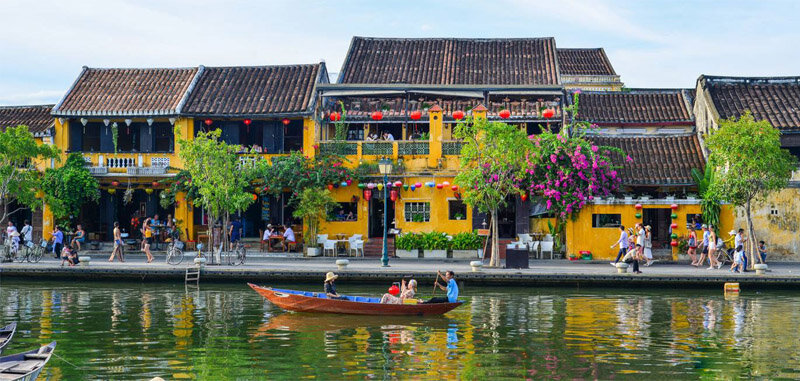
Fortunately, the ancient town of Hoi An was not destroyed during the two wars and managed to retain its unique architecture amid the rapid urbanization that occurred in the late 20th century. Since the 1980s, scholars and travelers, both domestic and international, have begun to recognize the architectural and cultural values of Hoi An, transforming it into one of Vietnam’s most attractive tourist destinations.
Most of the structures here are traditional ancient architectures dating from the 17th to the 19th centuries, lining narrow streets. Interspersed among the old houses are religious and spiritual buildings that reflect the town’s formation and development.
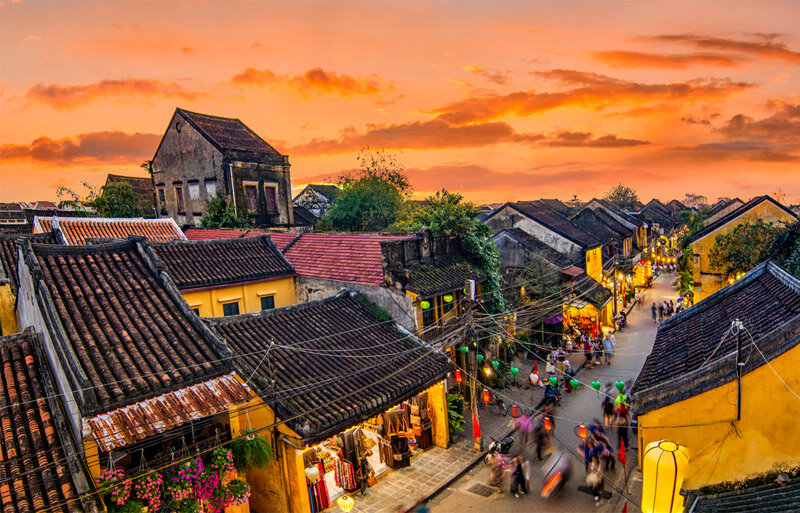
In addition, Hoi An has preserved a rich intangible cultural heritage, including customs, folk arts and cultural festivals. It can be said that Hoi An is a living museum of architecture and urban lifestyle, truly deserving of its status as one of the most livable cities in Vietnam.
Thus, Maison Office has just provided you with a summary of the top 10 livable cities in Vietnam. Each city on this list symbolizes the fusion of unique traditional culture and urban prosperity. We hope that through this article, you can gain a deeper understanding of the beautiful country of Vietnam and choose a place to stay for your travels or to settle down and build a life.
See more:

